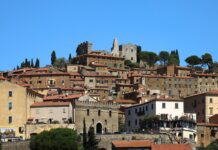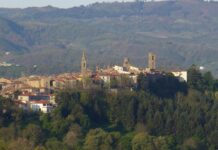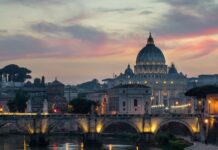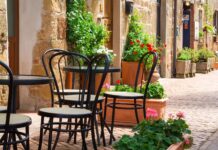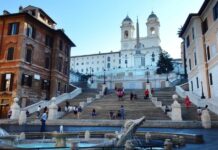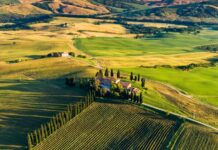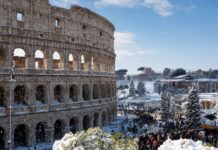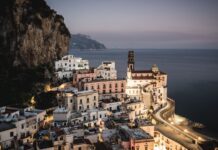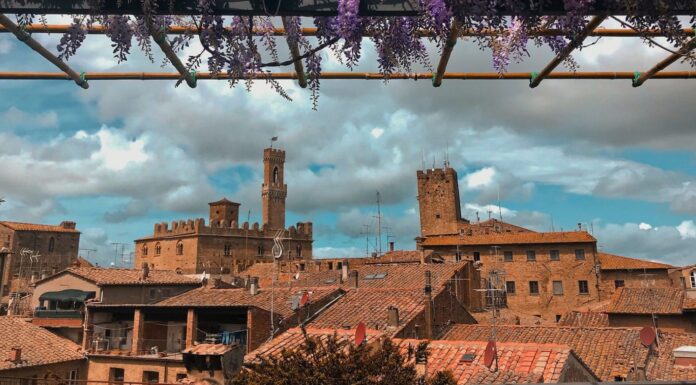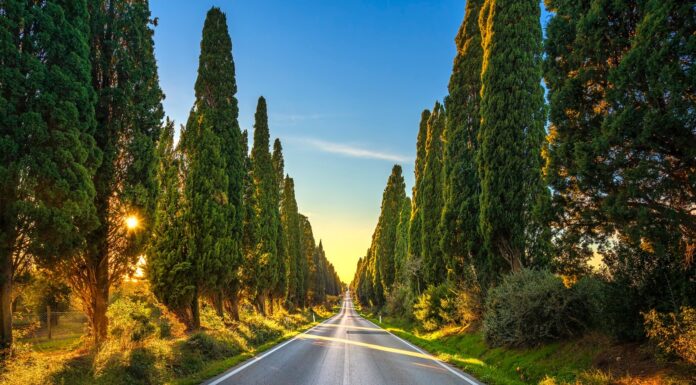If you’re planning a visit to Rome, the Altar of the Fatherland (or the Altare della Patria) is a must-see! It is part of the Victor Emmanuel II Monument, which was created to celebrate the unification of Italy and the newfound Italian cultural and national identity.
The Altar of the Fatherland offers a marvelous combination of historical monument, political symbolism, architecture, and museum exhibits. Built to commemorate and celebrate the newly unified nation of Italy, it is full of rich cultural symbolism and Italian art history. The monument is built in a central part of Rome, easily accessible along with other popular tourist stops.
I definitely recommend the Altar of the Fatherland on your visit to Rome! There is no ticket required to visit, it’s a great free activity in Rome. Let’s take a look at some of the main draws to the monument.
What is the Altar of the Fatherland?
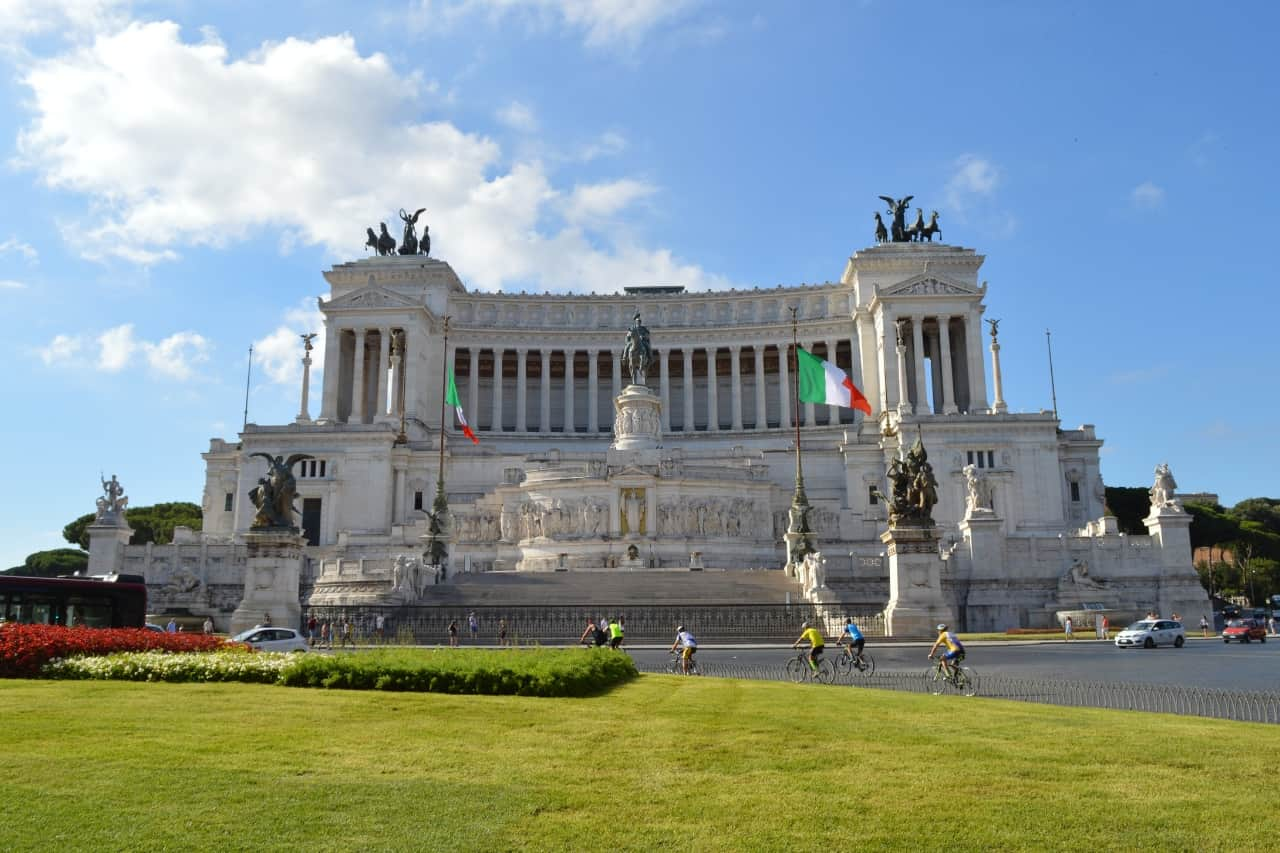
The Altar of the Fatherland, in Rome, is a portion of the Victor Emmanuel II Monument, which was built from 1885 to 1935 in honor of the first king of the newly unified country of Italy: Vittorio Emanuele II. During the construction of the monument, the architect Giuseppe Sacconi decided to add a secular altar, dedicated to the Roman goddess Roma who represented Rome and Roman power itself.
Under Mussolini, the Altar was used for military parades, but after the second World War ended all fascist symbolism was removed and the altar again became a secular temple. It is currently managed by the Museum Center of Lazio, or the Polo Museale del Lazio.
Read More: Monuments in Rome – 22 Must-See Gems for History Buffs
Who Built the Altar of the Fatherland?
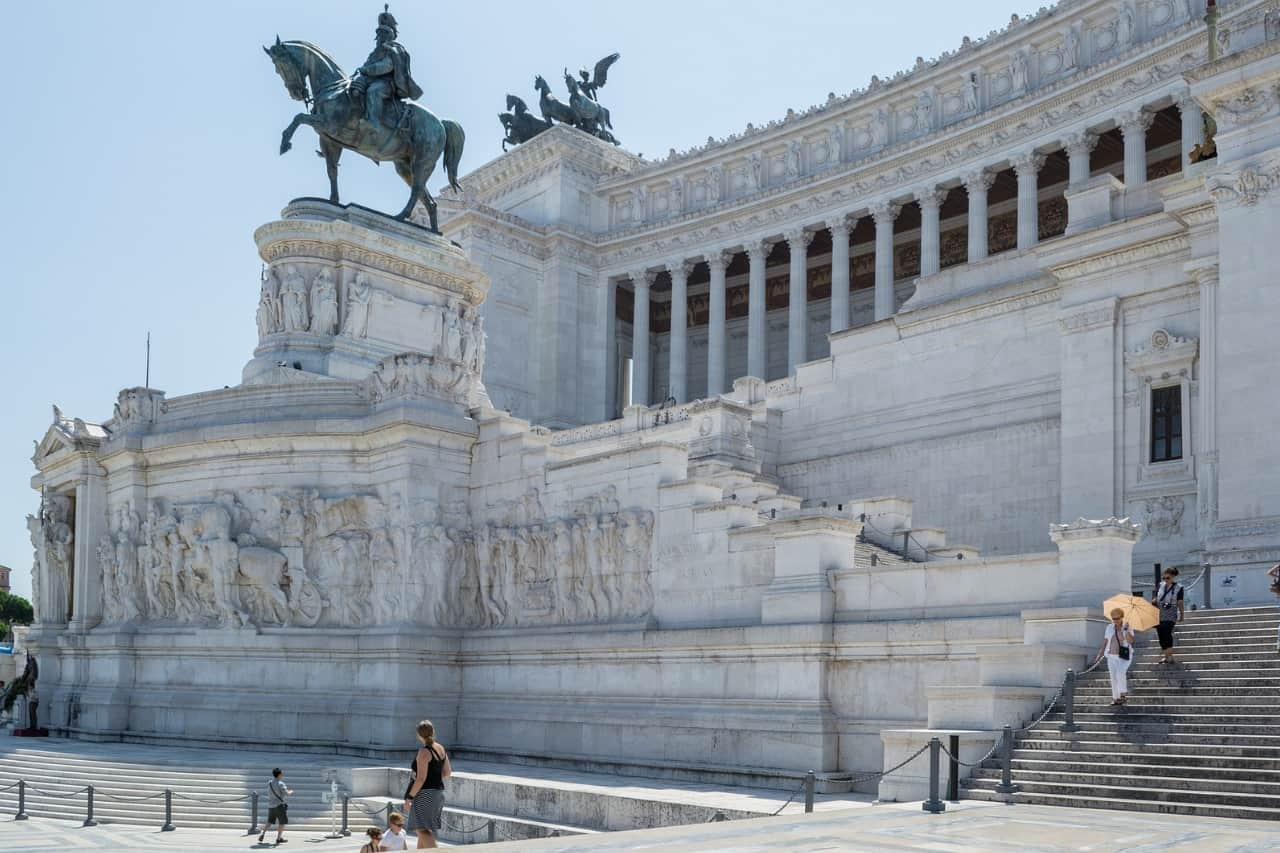
The Altar of the Fatherland is part of the monument of Vittorio Emanuele II, which was designed by Italian architect Giuseppe Sacconi (born in 1854 in Montalto delle Marche). After completing this famous work, he became a cornerstone voice in efforts and debates aimed at crafting a “national style” for buildings in the newly unified Italian state.
A contest was held in 1906 to select an artist for the sculptures on the altar itself, which was won by Italian sculptor Angelo Zanelli.
Explore More: Roman Columns – 8 Evocative Historical Experiences
Why Was the Altar of the Fatherland Built?
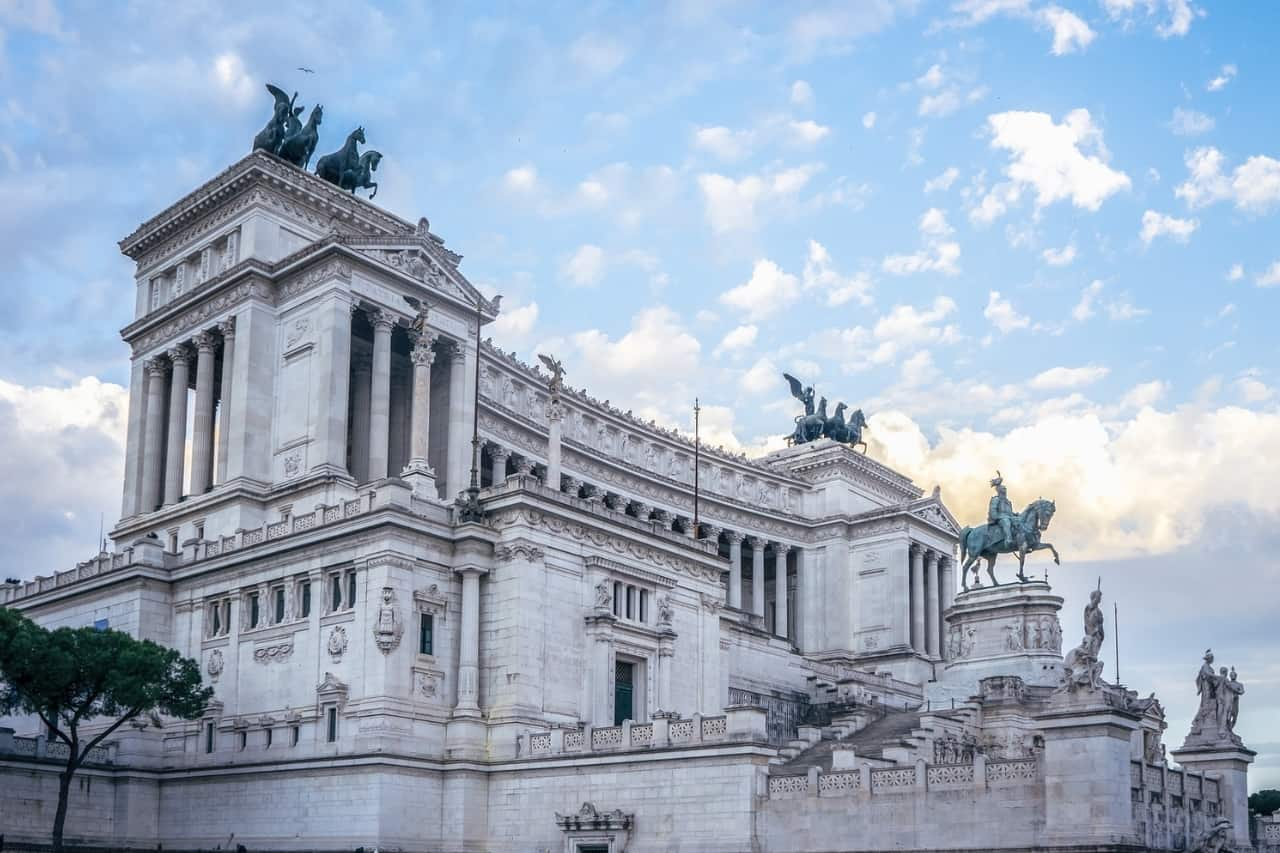
As with the king Vittorio Emanuele II himself, the Victor Emmanuel II Monument and its Altar of the Fatherland are a symbol of Italian identity and freedom from foreign rule. It was built after the unification of Italy as a nation state, as a symbol of the new nation and its evolving identity, politics, and symbols. Symbols referring to its regions, cities, and patriots are found in the monuments sculptures and architecture.
What Does the Altar of the Fatherland Represent?
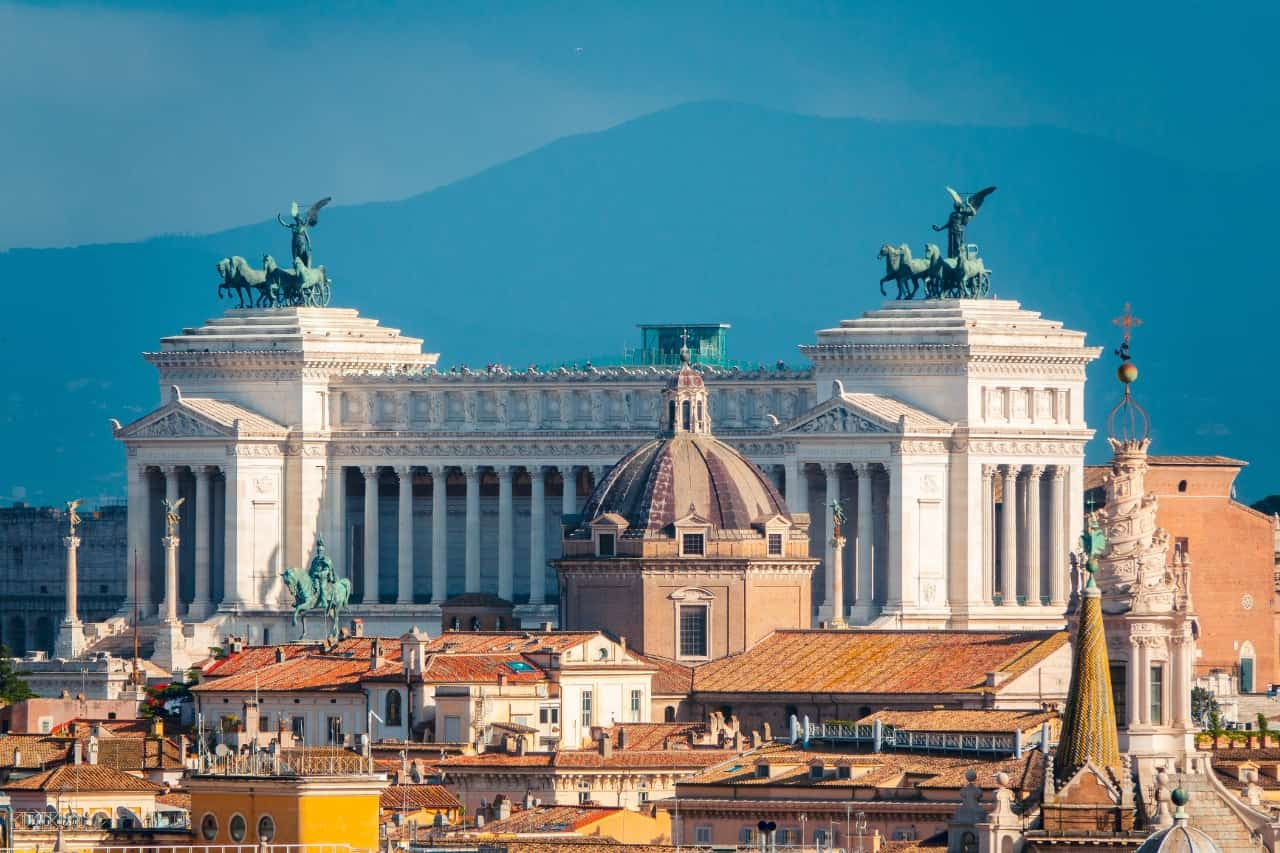
The Altar of the Fatherland adds a revenant centerpoint dedicated to the fatherland of Italy, newly unified when it was constructed. It was designed in Art-Nouveau, Eclecticism, and Neoclassicism styles. The altar itself was considered an altar to the goddess Roma, an ancient Roman deity who personified the power of Rome. The dominant centerpiece of the altar is thus a statue of Roma.
On each side of the entrance lies a foundation: on the east side, the Adriatic Sea fountain and on the west side, the Tyrrhenian Sea fountain.
Read more: Piazza del Popolo – 15 Things to See and Do
The Staircase’s Statues
The altar is accessible from the entrance of Piazza Venezia, where a staircase leads Altar. Its continuation past the Tomb of the Unknown Soldier and up to the portico and the propylaea, which symbolizes an ongoing procession of Italians. Along the staircase there are statues: subjects inspired by unification patriot Giuseppe Mazzini: Wisdom, Thought, and Action – important philosophical elements of the unification process, Winged Lions and Winged Victories, The People, Genius of War, Discord, and Tyranny. After the last statues on the staircase, the Winged Victories, you will arrive at the terrace of the Altar of the Fatherland. Here we find the main statue of Roma, as well as sculptures symbolizing the founding values of Italy: Strength, Concord, Sacrifice, and Civil Right.
The Triptych of the Altar
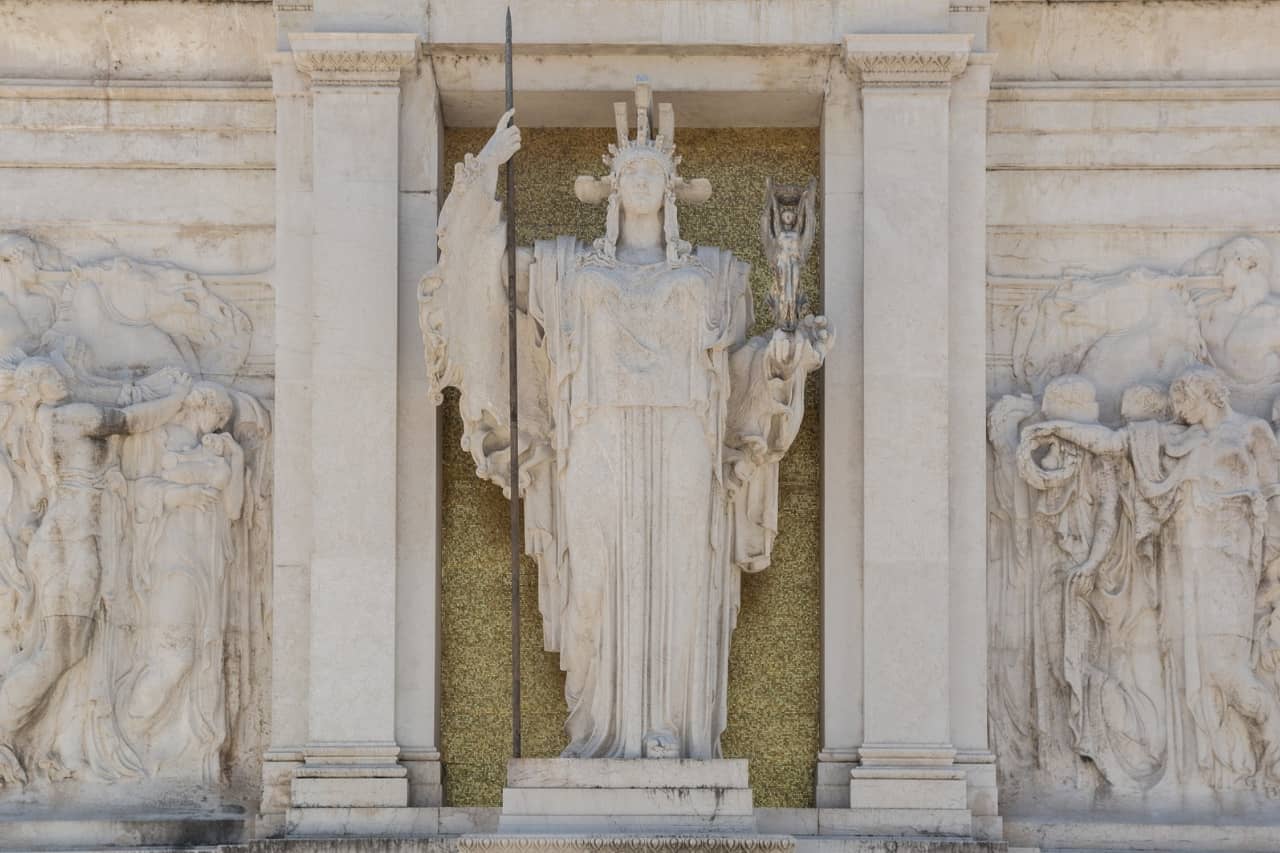
The statue of the Roman goddess Roma was chosen as a centerpiece of the Altar of the Fatherland to represent the critical and intentional selection of Rome as the capital of the new Italian state by the patriots of Italian unification. It is sculpted on a golden background, and stylized with warrior traits. Zanelli also selected references to Athena, the Greek goddess of war, as well as wisdom and the arts.
On each side of the statue of Roma you will find two bas-reliefs. They reference Virgil’s Bucolics and Georgics – Triumph of Labour and Triumph of the Patriotic Love – and the virtues of the Italian cultural “soul.” Together these three works of art create “the triptych of the Altar of the Fatherland,” with Roma at the center.
What To Do and See in the Altar of the Fatherland
The Victor Emmanuel II Monument structure contains many memorials, statues, and viewpoints of interest. Every detail has symbolism and meaning! Here are a few of our favorite elements that you should be sure to check out on your visit.
The Terraces

Besides the terrace of the Altar, the Victor Emmanuel II Monument has a terrace of the redeemed cities, and the terraces of the two propylaea. The terraces are one thing the monument is most known for, offering sweeping views of the most important monuments of Rome – Capitoline Hill, the Roman Forum, Palazzo Venezia, and the Pantheon. Each terrace offers sculptures with symbolic meaning related to the significance of the monument.
You can walk the steps to the terraces when you visit, no ticket needed, or you can buy a ticket to take the scenic glass elevator.
The Equestrian Statue of the Vittoriano
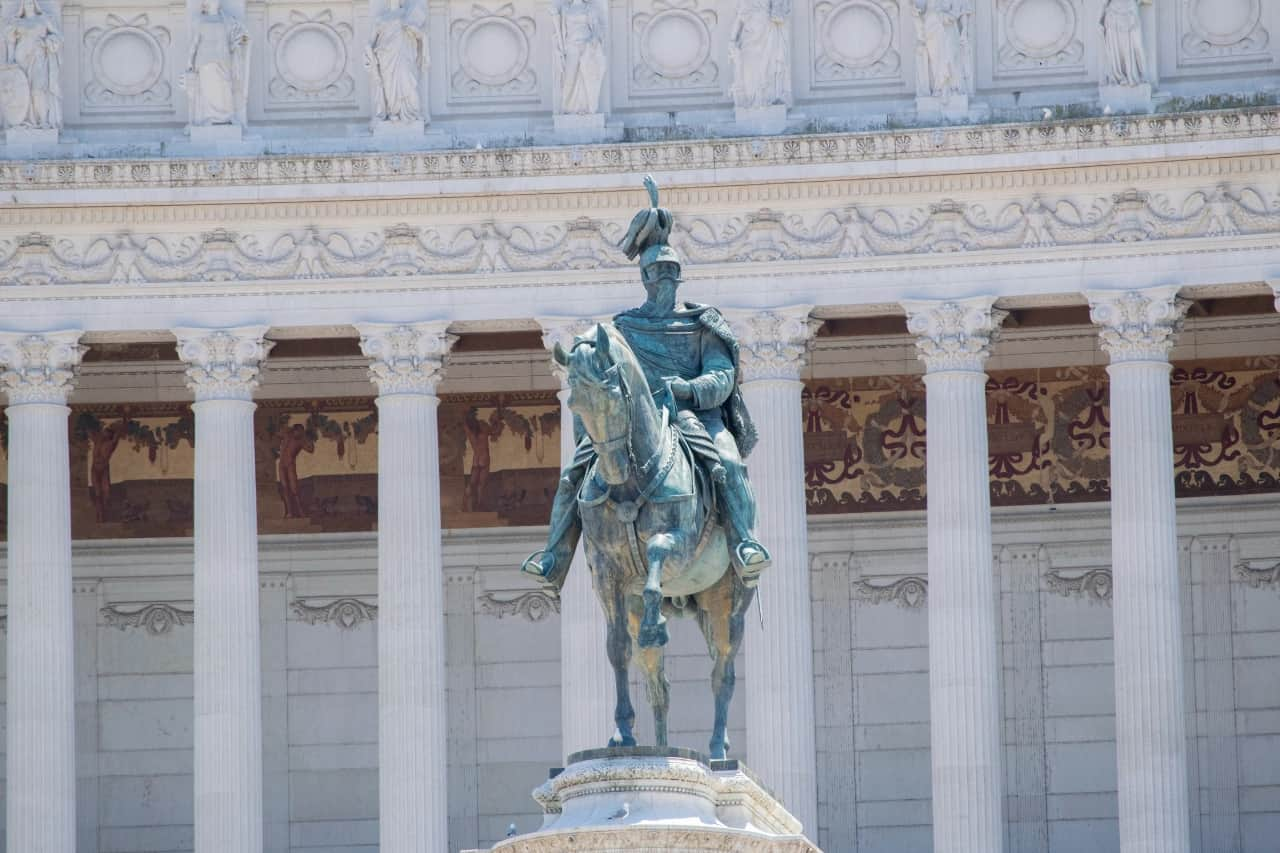
The Italian King Victor Emmanuel II’s equestrian statue is the focal point of the monument named after him. It is made of bronze, 12 feet tall and over 10 feet wide. Construction began right after the death of Victor Emmanuel II, and was done in 1927. An 1884 call for artists led to the hire of Enrico Chiaradia, but the architect Sacconi was not in agreement with the style choices, deeming them too realistic. After Chiaradia died in 1901, the statue was completed by another artist, Emilio Gallori.
On the base of the statue, sculptures represent important figures in the unification of Italy, such as the unified armed forces of the: Engineers, Navy, Artillery, and Cavalry. 14 allegorical female figures symbolize the cities and regions of the new country of Italy, each carved by a different artist with a connection to that place.
The Museums Inside
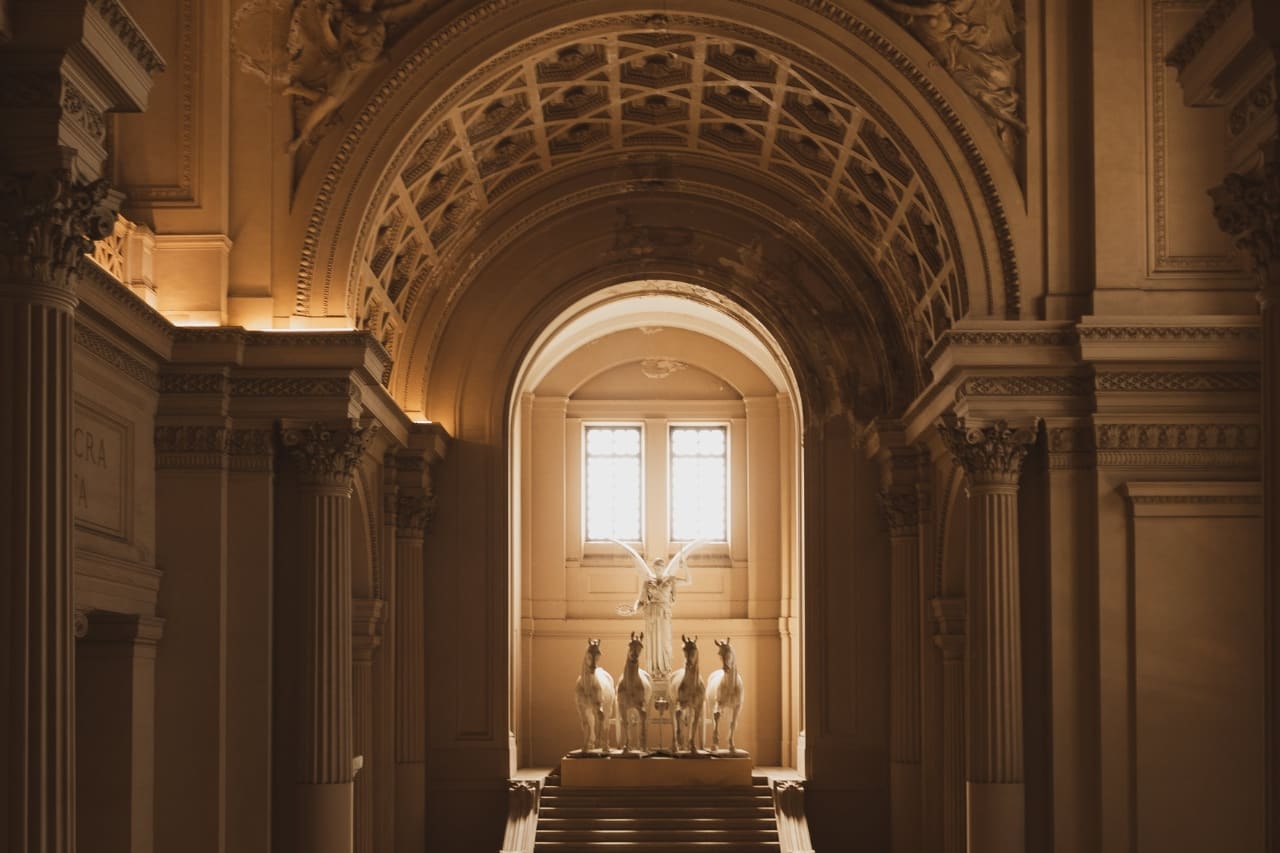
The Altar of the Fatherland contains several museums inside: the Flag of Italy Memorial, the Central Museum of the Risorgimento (Unification), and an area that hosts temporary exhibitions which is called “ala Brasini.”
The Central Museum of the Unification houses artifacts and art from between the end of the 18th century and the First World War related to the unification. It also contains the Shrine of the Flags, a museum of old war flags.
The Tomb of the Unknown Soldier (Milite Ignoto)
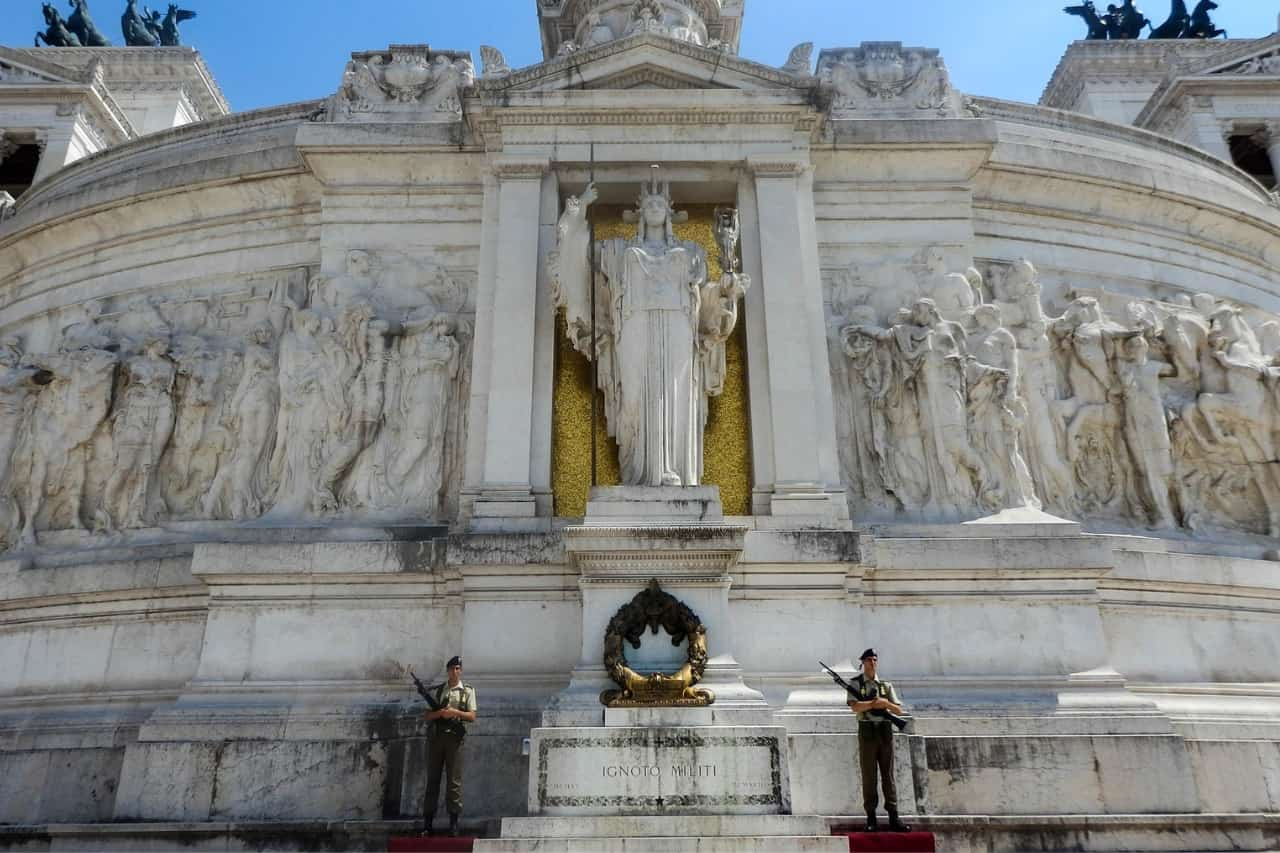
Following World War I, the monument at the Altar of the Fatherland was chosen as the resting place for an unidentifiable soldier. The tomb was constructed to symbolically represent all soldiers who died in the war – the ultimate sacrifice for their Italian homeland and its ideals, and thus the power behind the monument.
Piazza Venezia
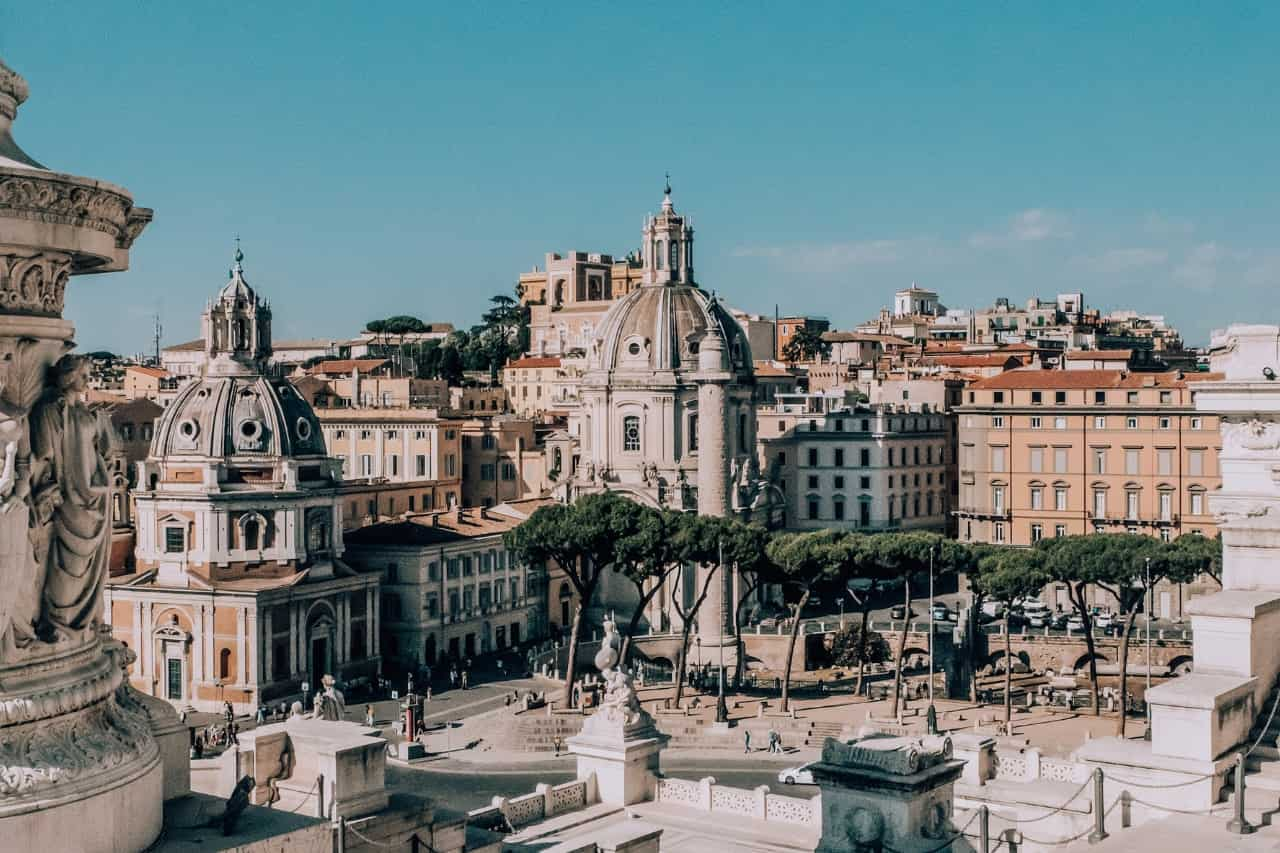
The Piazza Venezia, is the square on which the Altar of the Fatherland is built – named for the Palazzo Venezia, the past embassy of the Republic of Venice in Rome. It is a popular tourist spot, easily walkable from many popular sights. It can be found at the foot of the Capitoline Hill, next to Trajan’s Forum.
Tickets for the Visit to the Altar of the Fatherland
There are no tickets required to visit the Altar of the Fatherland. A visit to this monument is one of the many awesome free things to do in Rome! It is open from 9:30am to 7:30pm (but the last visit is at 6:30).
One of the draws of the Altar of the Fatherland is a glass elevator ride to the terraces which offers pristine views of Rome, and does require a ticket.
Best Time of the Year to Visit the Altar of the Fatherland
The Altar of the Fatherland is open year round. Summer is easily the most popular time for a trip to Rome, but the “shoulder season” in spring and autumn are also popular – and the calm of winter is not to be underestimated!
How to Get to the Altar of The Fatherland
The Altar of the Fatherland was constructed on Capitoline Hill, an Ancient Roman cultural center. It is found in Piazza Venezia. It is easily accessible alongside other popular tourist attractions in the center of Rome Capitoline Hill, the Roman Forum, Palazzo Venezia, and the Pantheon.
On public transportation, you can access it from Metro: Line B (nearest stop: Colosseo) and from the bus stops at Piazza Venezia, lines: 51, 60, 63, 80, 83, 85, 117, 118, 160, 170, 628.
Is the Altar of the Fatherland Worth it?
The Altar of the Fatherland definitely deserves a spot on your Rome itinerary! It offers unique views of Rome, important art, especially sculptures, symbols and sights of historical and political significance, and museums full of culture and art. Check out these other awesome hidden gems in Rome while you’re at it!


